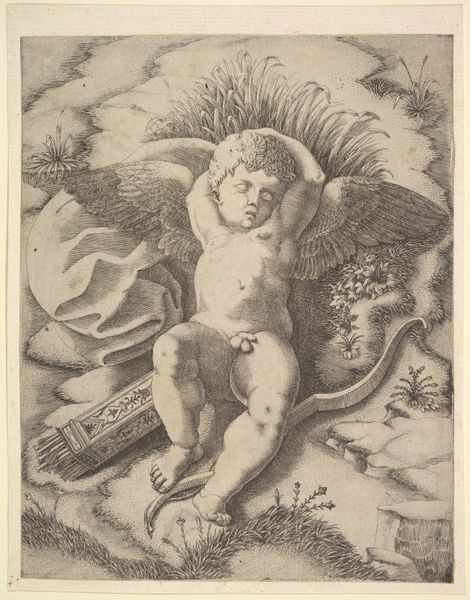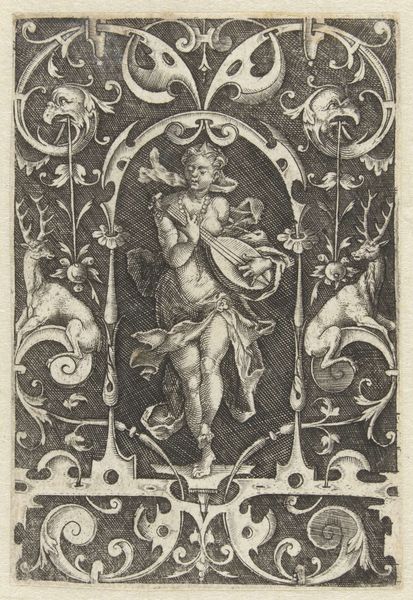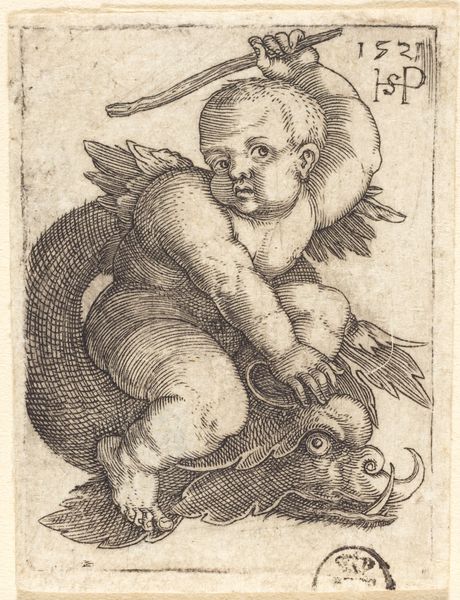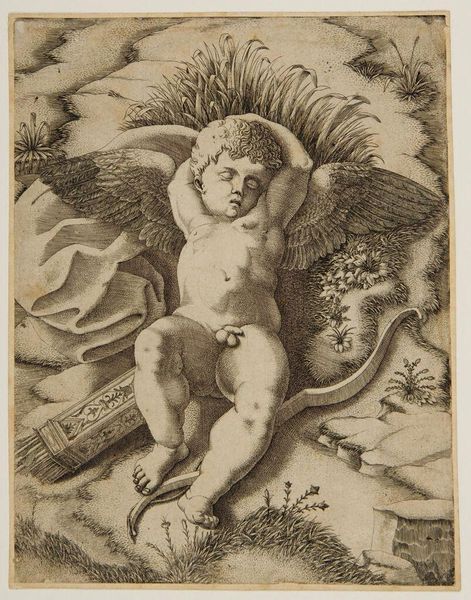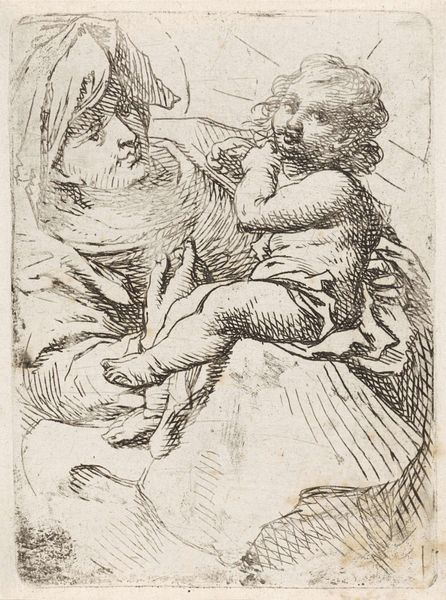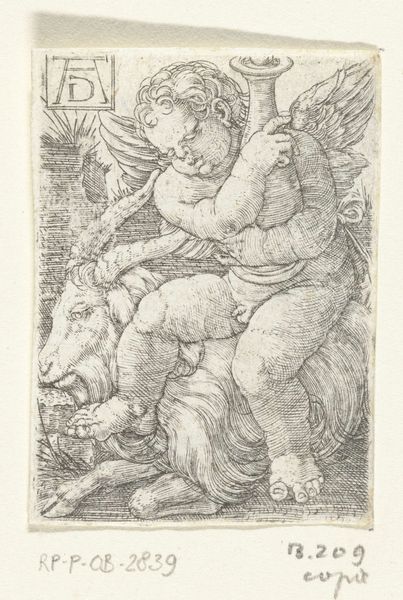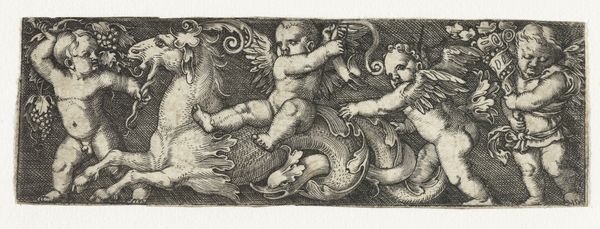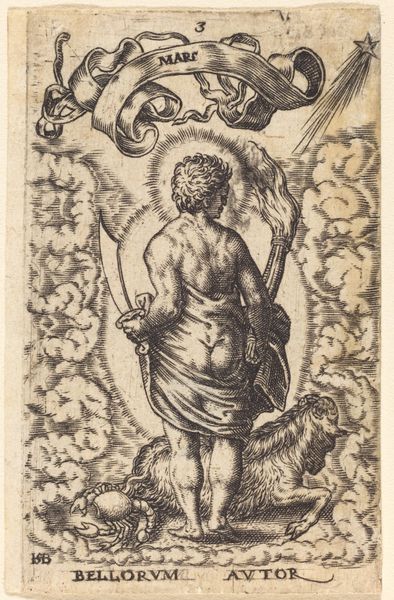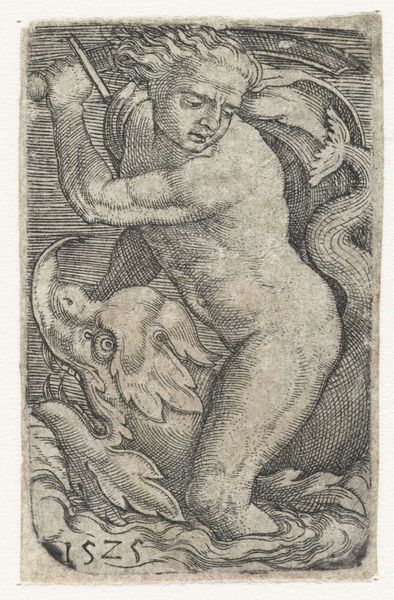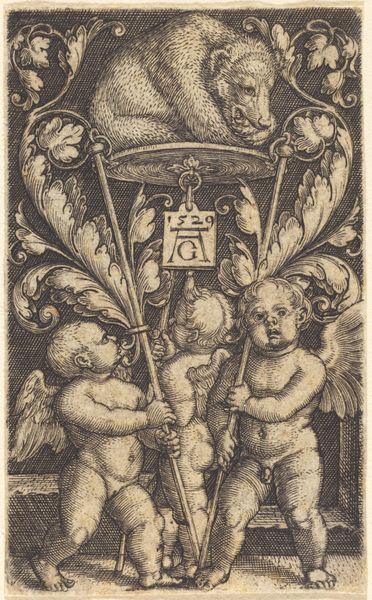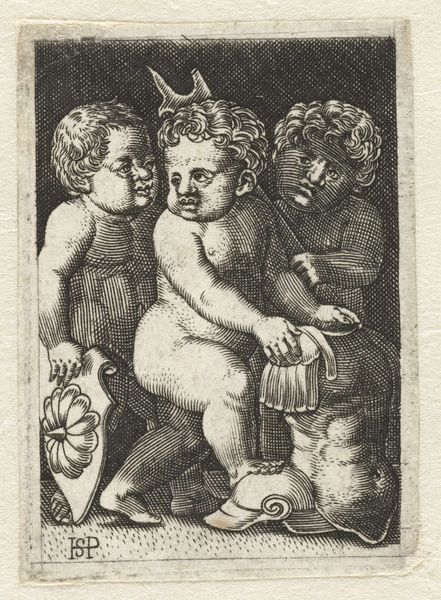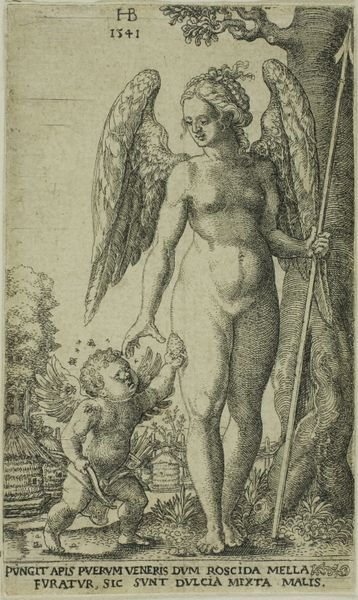
Vertical Panel with Cupid Holding the End of a Plant Sprouting Tendrils 1521
0:00
0:00
drawing, print, ink, engraving
#
portrait
#
drawing
#
pen drawing
# print
#
mannerism
#
figuration
#
ink
#
cupid
#
italian-renaissance
#
engraving
Dimensions: Sheet: 2 11/16 × 1 15/16 in. (6.9 × 4.9 cm)
Copyright: Public Domain
Curator: This is Jacob Binck’s "Vertical Panel with Cupid Holding the End of a Plant Sprouting Tendrils," made around 1521. It's an engraving, currently residing at The Met. Editor: Thanks! My first impression is of how…earthy this cupid feels. Compared to typical Renaissance depictions, he’s surprisingly grounded. What stands out to you about this piece? Curator: I'm struck by how Binck uses Cupid as a symbolic representation of the natural order. This isn't just about love, but the power of generation and growth, particularly in a time when Europe was experiencing radical social and religious upheaval. The Cupid's weight and very realness speaks to the material conditions of the era. The figure actively cultivates growth – how might that reflect shifting views of agency and control during the Renaissance? Editor: That's interesting. It makes me wonder about the intended audience and what message they would have taken away from it. Do you think this engraving challenges conventional ideals of beauty or innocence? Curator: Absolutely. The choice to depict a slightly plump, earthly Cupid resists the era’s tendency toward idealization and points to an appreciation of natural forms, particularly male youth as beauty ideals solidified through the elite's classical education. This cupid, simultaneously divine and earthly, suggests an early form of intersectionality, in which identities were beginning to be understood not as singular but comprised of varying social factors. This approach emphasizes the importance of acknowledging multiple viewpoints and diverse experiences in understanding Renaissance art. Editor: I see. It gives me a lot to think about how artistic expression can reveal historical attitudes toward identity and growth. Curator: And it's these very dialogues across historical eras, identities, and political forces that can enrich how we interpret art’s evolving role in society.
Comments
No comments
Be the first to comment and join the conversation on the ultimate creative platform.
